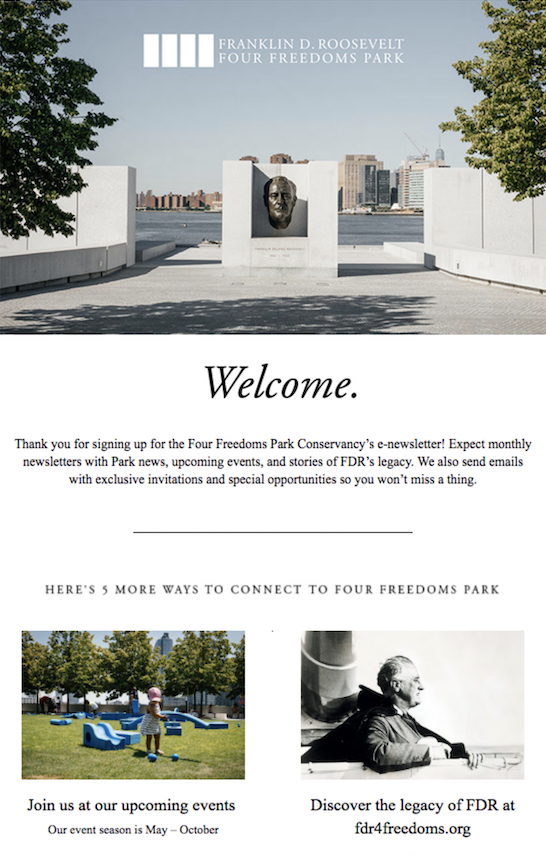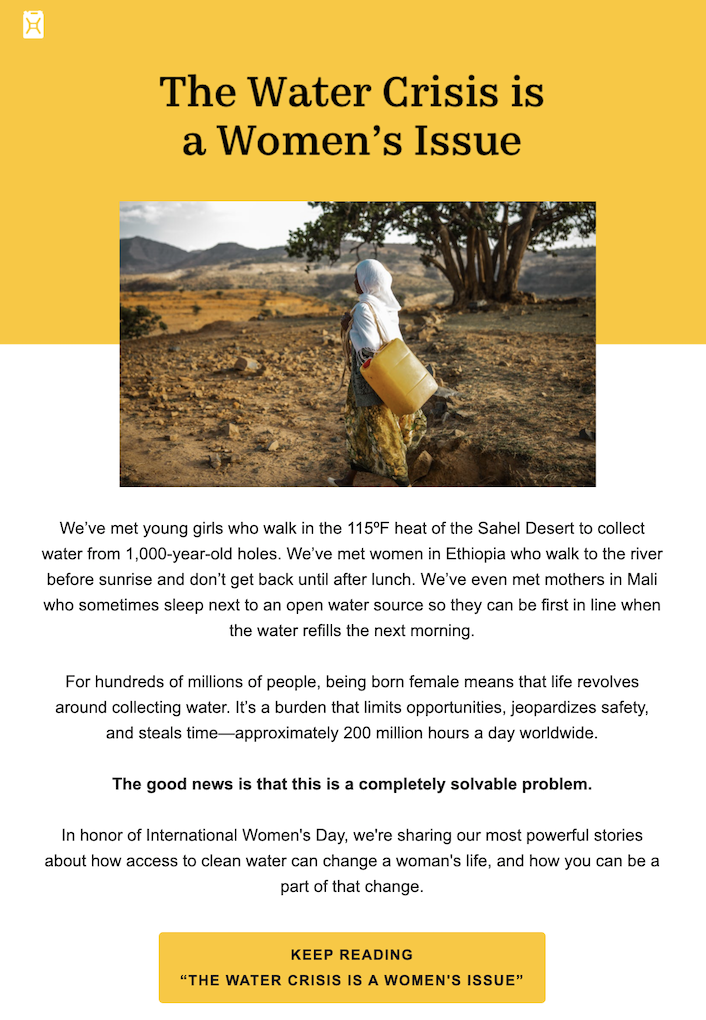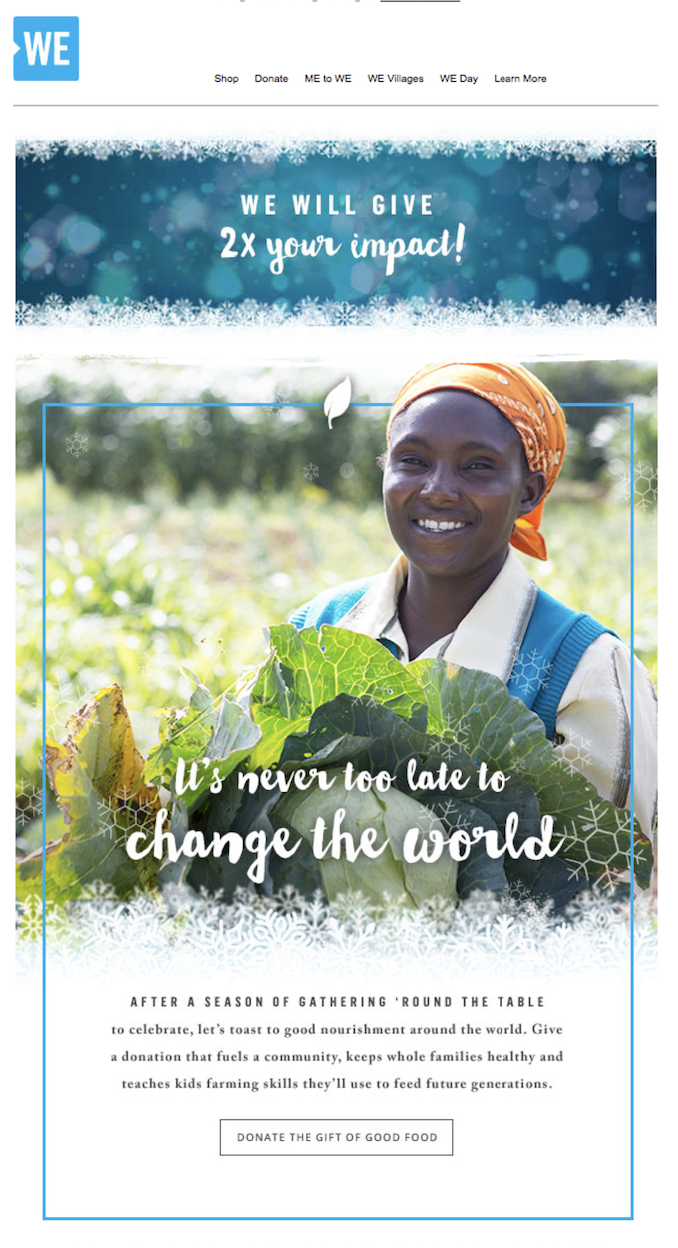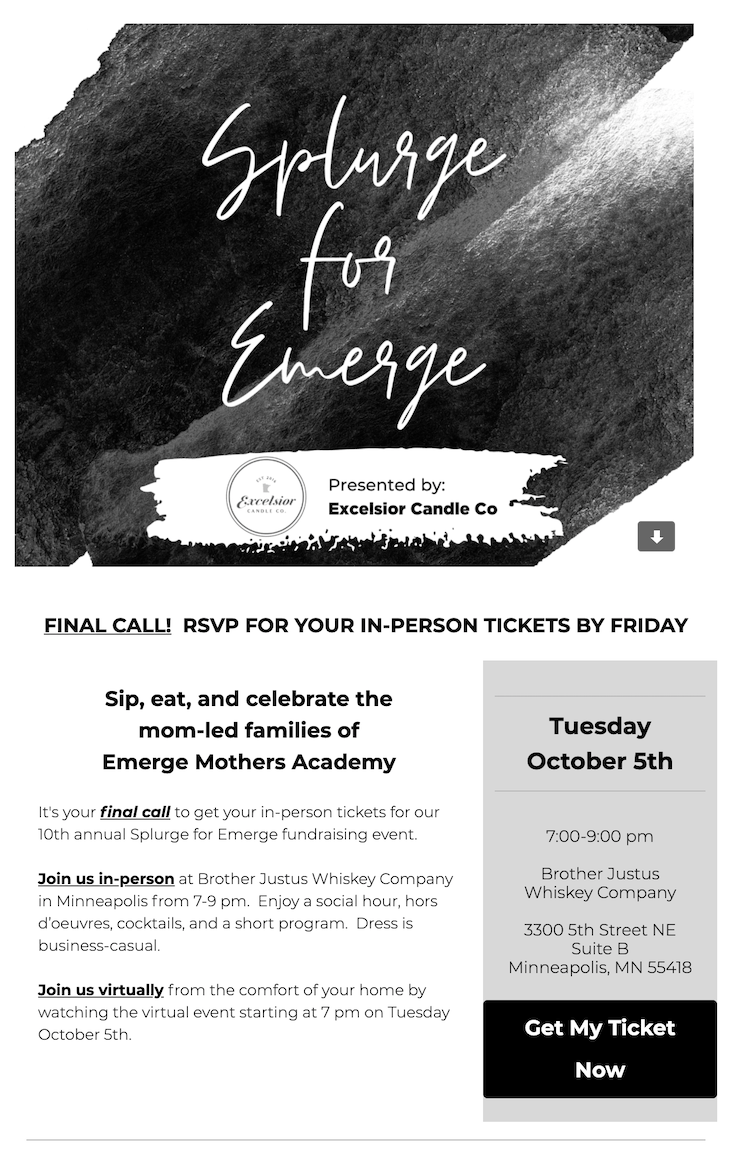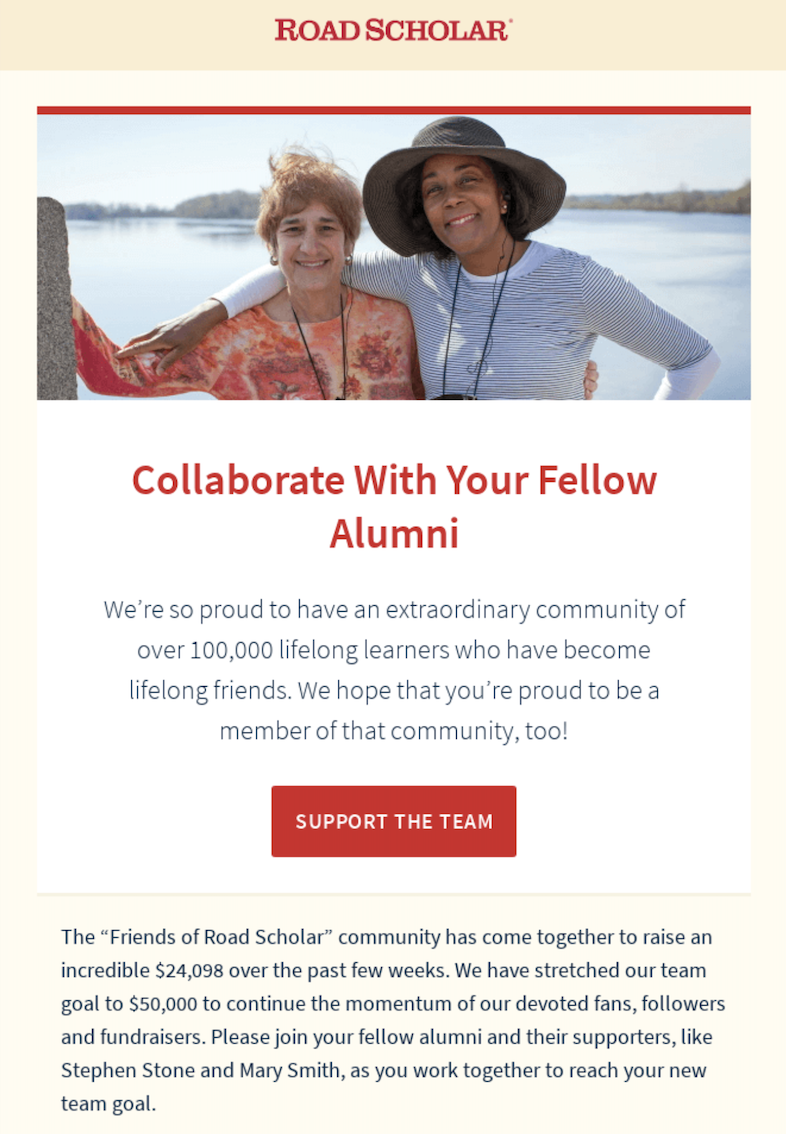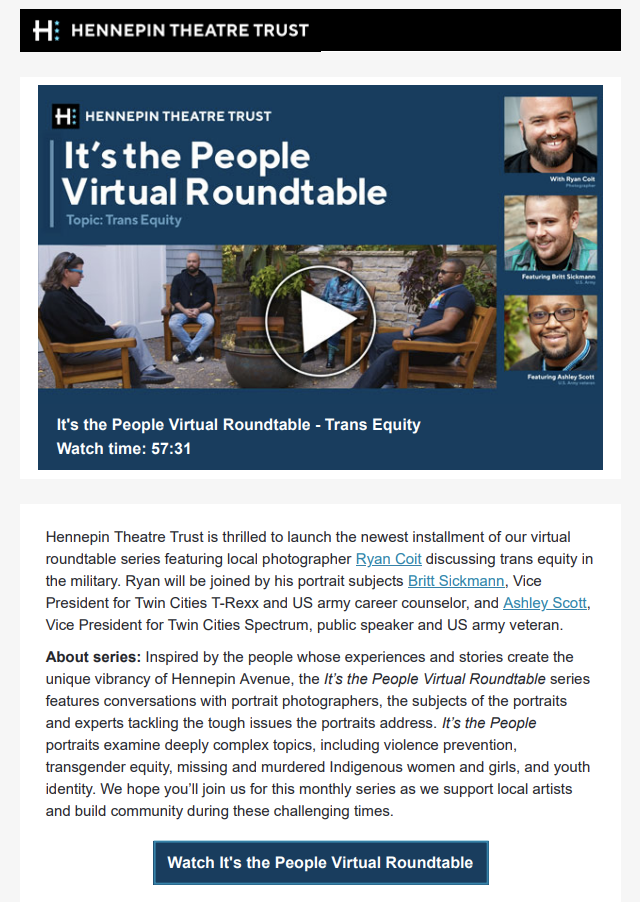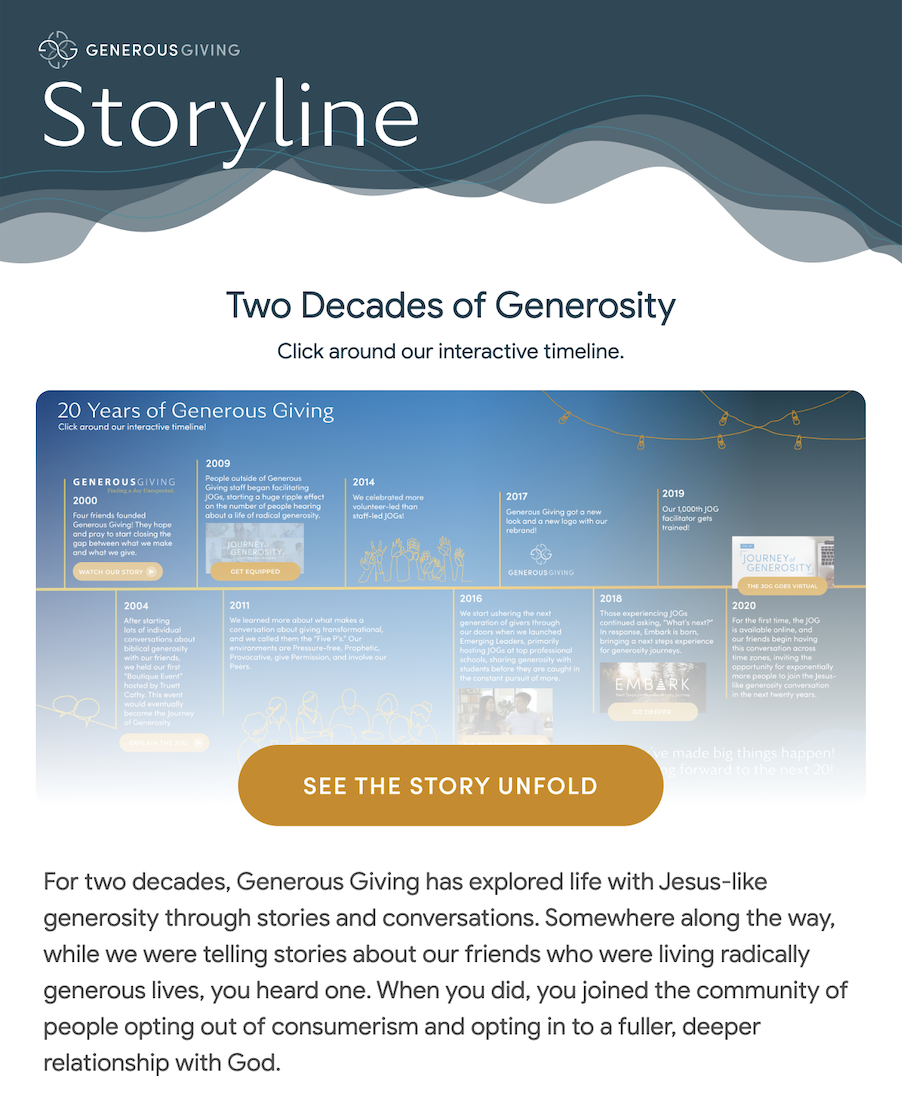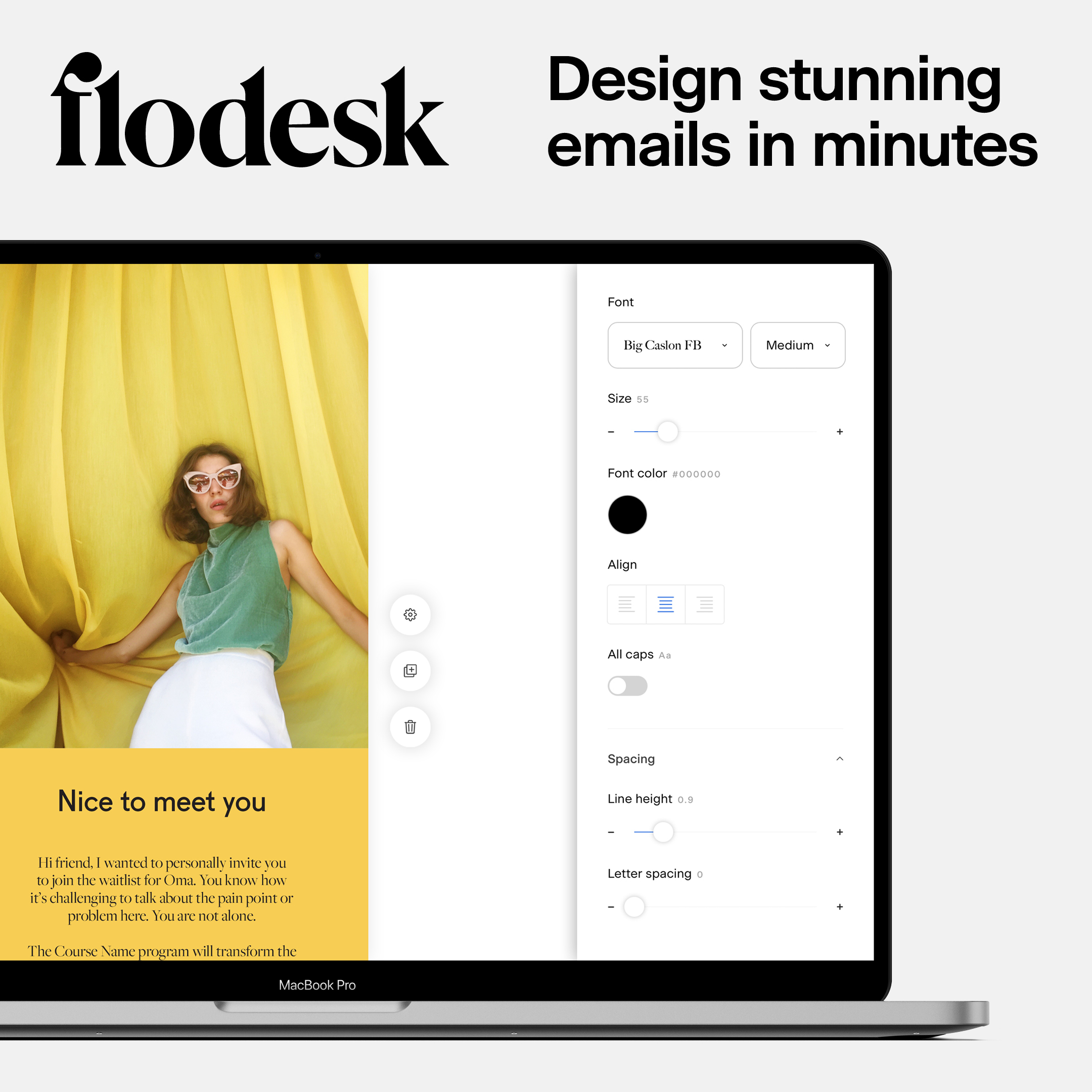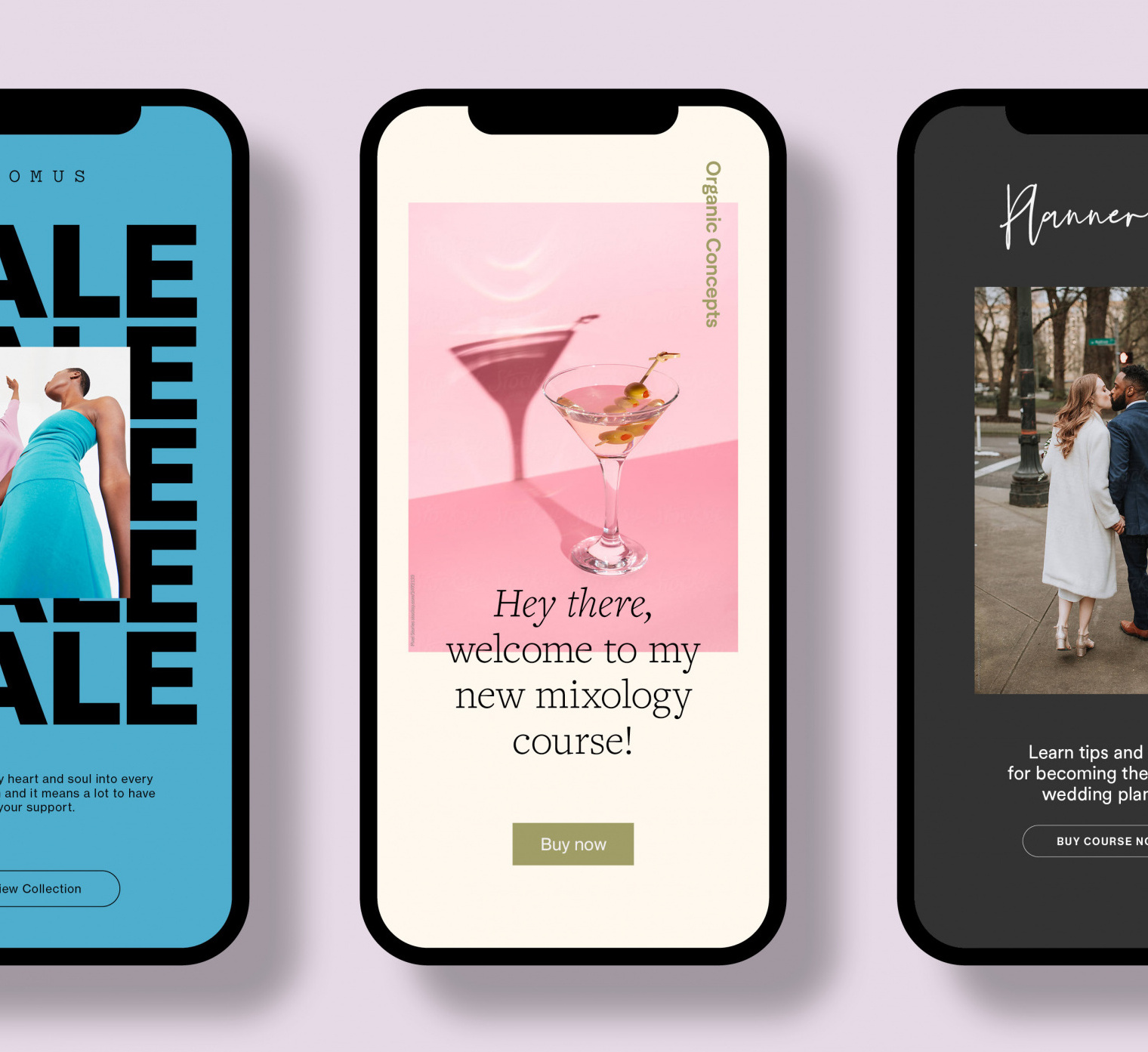How to Write a Nonprofit Newsletter | Ideas and Examples
Table of Contents Jump to:
Jump to:
Table of contents
As a nonprofit, you need to keep an eye out for opportunities to raise awareness and support for your cause—as well as chances to bring in donation revenue to fund projects. To do this, it’s essential to nurture relationships with your audience.
While you can use platforms like social media to stay connected, few marketing channels are as effective at relationship-building as email marketing. That’s because an algorithm isn’t controlling who sees your content and when. No matter your organization size, you’re going to get the exact same spot in the inbox.
It’s no wonder 74% of nonprofits are already sending fundraising emails. If you want to learn how to write a nonprofit newsletter that wins donors, keep reading. We’re sharing our top nonprofit newsletter ideas and tips to inspire your own.
A newsletter is a direct line of communication to your stakeholders—including volunteers and potential donors. That makes it a powerful tool for connecting and engaging with some of your biggest supporters on a consistent basis.
Instead of missing opportunities on social media, you can communicate powerful messages, stay top-of-mind, and track your audience’s response to your messages. By analyzing your open rates, click-through rates (CTR), and your best time to send a newsletter, you can optimize your messages and measure how well your emails are performing over time.
A nonprofit newsletter can help you:
- Share important news about your organization
- Gain more volunteers for your programs
- Maximize donations from loyal contributors
- Create a stronger connection with your readers
One of the best ways to learn how to create great emails is to take inspiration from other nonprofit email examples. This will also give you a sense of what your target audience is already seeing in their inboxes.
But first, let’s explore top newsletter ideas to inspire your own—plus key elements you should include in your emails.
Your newsletter is an ideal place to keep your audience engaged and informed of your organization’s activities and impact.
You can engage your subscribers with these nonprofit newsletter ideas:
- Success stories: Highlight inspirational impact stories from your community partners or introduce some of your project beneficiaries.
- Upcoming events: Alert your audience about future fundraisers, volunteering activities, webinars, or other initiatives you’re planning.
- Volunteer spotlights: Showcase dedicated volunteers and how they’re making a contribution. This humanizes your cause and underscores its impact.
- Project updates: Keep your supporters in the loop about current initiatives. Share accomplishments and upcoming objectives.
- Donor appreciation: Express your gratitude in a donor newsletter. You could feature a “Donor of the month” or share testimonials from donors about why they choose to support your cause.
- Educational content: Share insightful content that aligns with your mission. For instance, if your work involves environmental issues, you could provide tips for sustainable living.
- Behind-the-scenes: Offer a sneak peek into your day-to-day operations. This could include interviews with team members or a “day in the life” type of story.
- Fundraising progress: Show your audience how your fundraising efforts are progressing. Use engaging visuals like charts or infographics to present your fundraising newsletter data in a more digestible format.
- Partnership announcements: Announce any collaborations with communities or organizations that are working on similar initiatives.
- Seasonal reports: Summarize annual or quarterly achievements, resource allocation, and future plans for your organization.
- Media coverage: If your cause has been spotlighted in the press or media, share these clips to demonstrate credibility, inspire trust, and encourage donations.
- Advocacy: Engage in discussions about broader issues related to your cause and encourage readers to get involved in spreading the message.
- Gift ideas: If you have merchandise for sale or offer gift donations, include a segment in your nonprofit newsletter to promote these items.
- Call to action: Regularly remind subscribers of the different ways they can support your efforts, be it through donations, volunteer work, or sharing your content on social media.
- Photos from the field: Use visuals to demonstrate your work in action. Share images from your projects to create a powerful connection with your subscribers.
Remember, the goal of your newsletter is to engage your subscribers. Make it visually appealing, easy to read, and ensure it provides them value.
Grow your impact with emails people love to get
Flodesk empowers nonprofits to send compelling newsletters that resonate with your audience

Whether you’re working with a content marketing specialist or creating a nonprofit newsletter with an in-house team, this step-by-step guide can help set you up for email marketing success.
Let’s dive in.
Craft bold headlines and subject lines
The first thing readers will see is your email subject line. It can make or break their decision to open your email. Craft subject lines that are eye-catching, but short and sweet.
With more email opens coming from mobile devices, try to keep your subject line to 25–40 characters long. When in doubt, shorten the subject line as much as possible.
For extra personality and eye-catchiness, include an emoji. While their impact on open rates are inconclusive, some testers find that they raise CTR by over 60%. Emojis are not only a great way to convey emotions and make a statement, they can also help keep your subject line brief.
Once readers open your email, you need to maintain their attention with a memorable headline.
Here are some of our favorite headlines from nonprofits:
- “Tomorrow might be the day you’ve been waiting for”
- “Nora gave $8.15. Will you?”
- “Major Wendy saves a life”
- “We are stronger together”
- “We’ve got a story for you today”
- “Can we be honest with you?”
Next, focus on your email content. Newsletter introductions should be compelling, and grip the reader with relevant facts and figures, stories from the field, or moving testimonials.
You never know the impact a single story can have on conversions. Sharing this kind of content may increase support for your organization or re-engage inactive subscribers. Compelling content has the power to turn subscribers into volunteers and donors.
If you’re not sure what to send your supporters, consider sharing:
- Relevant news stories your audience may not hear about elsewhere
- Upcoming events that you need volunteers for
- Updates about your organization or the communities you collaborate with
- Stories from people and communities you work with
Clarify your message and include relevant links
By consistently sharing great content, you’ll help drive your nonprofit’s movement forward. Make it easy for your supporters to continue their learning journey or get involved with your brand. Include clear call to actions (CTAs) and relevant links so they know what to do next.
Every time you communicate, you should have a clear message and goal. When you’re planning how to write your newsletter, first clarify your message and the next steps the audience should take.
If you skip this step, you risk trying to accomplish too many things in one email. This will dilute your message and may leave your audience confused about what they should do next.
Consider including newsletter links to:
- Blog posts with new ideas on getting involved
- A volunteer signup page for an event or program
- Informative podcast interviews with a founder or another team member
- Day-to-day videos that demonstrate the work being done by your programs
- A fundraising or donations page where they can make a contribution
- Your website where supporters can learn more about your mission
Pay attention to your email design
To ensure your audience doesn’t simply ignore your emails, be intentional about your email design and newsletter branding. Include ample white space and make sure your logo is visible.
Maintain a consistent and professional email experience by always following your visual branding guidelines. You can easily stay on-brand by customizing your color palette and selecting up to five signature brand colors in Flodesk.
Also, keep your reader’s screen size in mind. Create a mobile responsive design using Flodesk—ensuring your email looks just as great on a mobile device as it will on a desktop.
Strengthen your call to action
Lastly, you’ll need a clear CTA to guide readers to what you want them to do next. Drive subscribers to take action by including compelling CTA copy and bolded text or CTA buttons.
Ensure your CTA link or button stands out by using contrasting colors to help it pop on the page. Within Flodesk, you can create outlined buttons, filled buttons or customize highlighted link text in your emails.
Grow your impact with emails people love to get
Choose from Flodesk’s stunning email templates, make it yours, and send it in minutes.
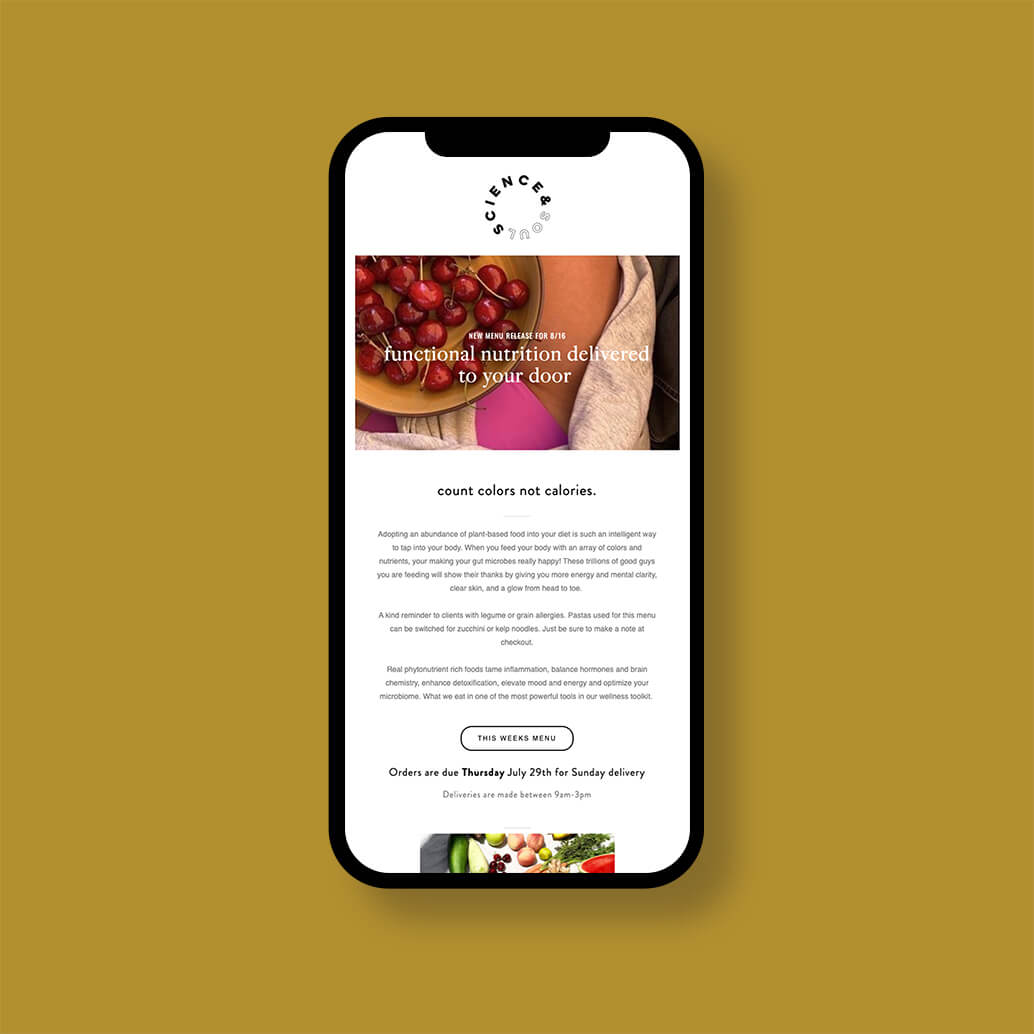
Now that we’ve shared which newsletter elements are most important, it’s time to explore some of the best nonprofit newsletters examples—so you can create emails that inspire more people to contribute to your cause.
We’ve compiled a list of nonprofit newsletter examples with strong visuals and content to inspire your emails while helping you raise money, connect with prospective donors, attract more volunteers, or engage your biggest supporters.
Let’s take a look!
1. Welcome email
Once someone signs up for your list, they don’t want to hear crickets. To ensure they don’t forget about your nonprofit, it’s best to jump into their inbox right away with a welcome email that’ll help them know what to expect.
In your welcome email, you may want to:
- Thank subscribers for joining your community
- Share relevant links, articles, and information about your organization
- Set expectations for how often they’ll hear from you
- Keep them interested with a “stay tuned” message
In this welcome email example, Four Freedoms Park Conservatory expresses their gratitude to their new subscribers.
It mentions that they’lll receive a monthly newsletter along with news, updates on upcoming events, and relevant articles. When paired with stunning photography, nonprofit newsletter examples like these make a great first impression.
With a blog feature newsletter, you can make sure your loyal supporters never miss a new article—and learn all about your work on the ground.
Include a captivating image as well as a short write up that demonstrates what the article is about—enticing your audience to keep reading. Lastly, make sure there’s a clear link to where they can view the article in full.
Nonprofit newsletter examples like this one from Charity: Water illustrate how to do this effectively. This social impact organization invests time and effort in telling powerful stories from the field, emphasizing these stories across all their channels. By featuring these in their donation newsletters, readers can see their contribution within a broader context.
When someone donates to your nonprofit organization, they want to see what their dollars are used for.
By using email marketing as an essential communications tool, you’ll be able to share these through an annual report newsletter. It’s a chance to outline achievements from the last year or latest quarter.
This might include a breakdown of how you spent donations, an explanation of your theory of change, and a plan for what you hope to achieve in the coming weeks, months, and years.
You can also use nonprofit newsletters like this to outline links between project goals and the input of your community’s donations.
In this example, you’ll see how CARE Australia sends a special email to thank all contributors for their generosity, including statistics that showcase the impact of their donations.
Here, they note how individual donations have financed CARE Australia efforts to assist more than 2.1 million people in one year. You can share these numbers in simple bullet points or go the extra mile and include eye-catching icon illustrations.
To attract more engagement, some nonprofits craft campaign-related newsletters. They’re a great way to raise more money or inspire people to join new initiatives and become a part of a bigger mission.
Your campaign could be centered around education and advocacy, linking to relevant articles or project updates. Or it could be a fundraising newsletter campaign with news on donations and fundraising events. Whichever campaign strategy you choose, it’s a great opportunity to get your audience involved in your cause through donations or advocacy.
By following this kind of nonprofit newsletter template, you can create a campaign that resonates with your audience and gets them excited to contribute to the conversation across other platforms.
In this example, UNICEF created a campaign around the hashtag #WaterIs. This water-themed campaign sought to raise awareness and distribute relevant content. They even partnered with Beyoncé to help families gain more access to clean water.
Another way to amp up your donation newsletters is to offer a donation matching program. Your fundraising newsletter can help you re-engage cold subscribers with an opportunity to double their impact.
This may be extra enticing for those who can only contribute smaller amounts. With a donation match program, they’ll feel like their donation is going further.
You can also partner with for-profit businesses to match donations up to a certain amount.
In this example, WE created a donation match newsletter to inspire more subscribers to give to their organization during the holiday season.
With warm imagery, a gorgeous email design and a concise call to action, this newsletter makes a statement.
Grow your impact with newsletters people love
Create engaging, branded newsletters, designed to drive action and showcase all you do.
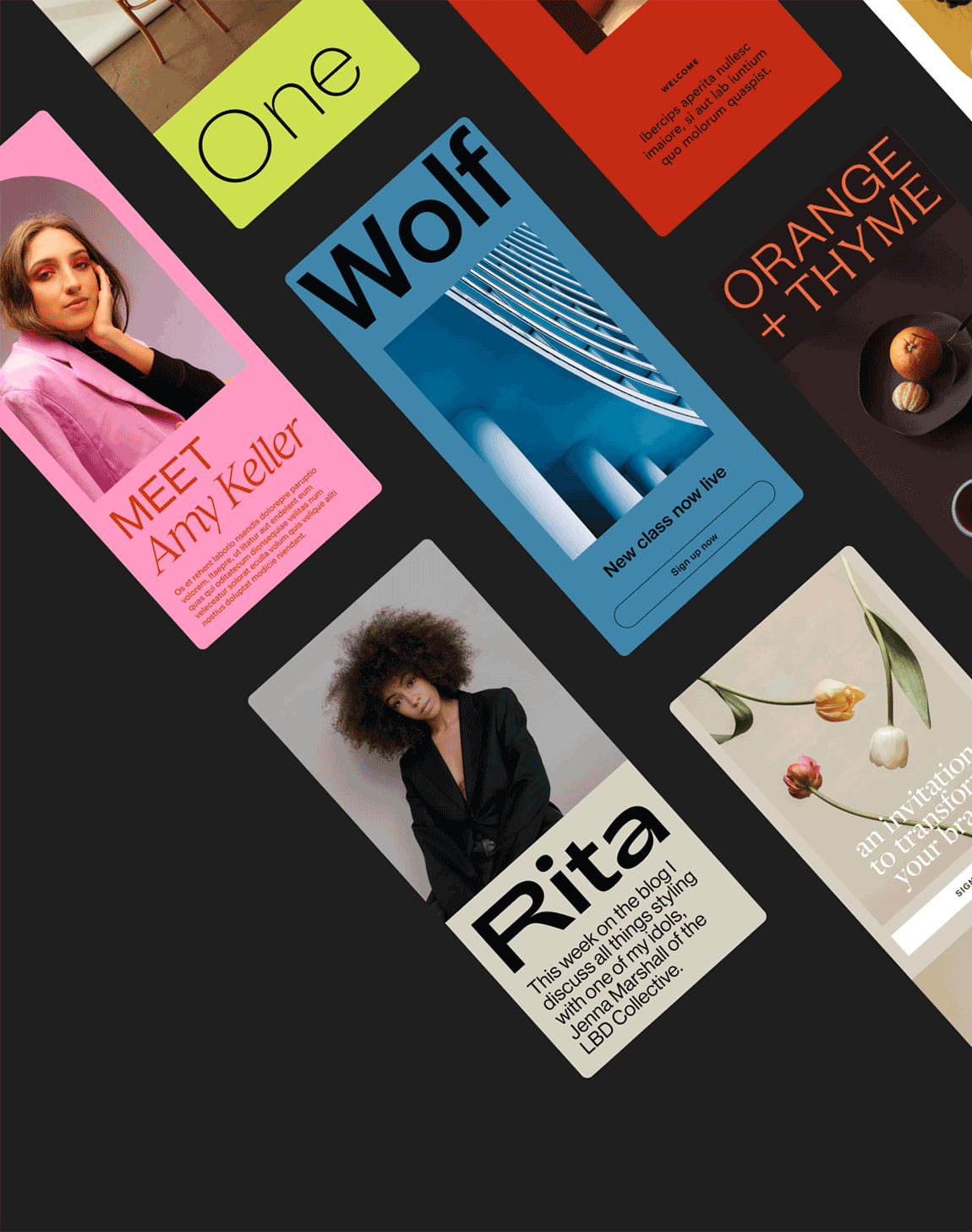
Nonprofit organizations often host special events and galas to raise funds for projects or programs. These are excellent opportunities to gain support, educate, and unify your audience by a shared cause.
Keep your community engaged and up to date by sharing your upcoming nonprofit events in your newsletter.
In this example, Emerge Mothers Academy (EMA) created a newsletter to remind subscribers of their last chance to purchase tickets for their annual fundraising event.
By listing all of the important event details in one convenient place, this nonprofit newsletter is easy-to-understand and take swift action through.
Some of the most generous contributors to your organization may be program alumni. This is common at universities and other nonprofits that offer long-term support.
If you want to re-engage members who graduated from your program, an alumni relations newsletter may be a powerful tool. That’s why some nonprofits have whole teams devoted to alumni relations efforts.
In this example, Road Scholar gives readers an opportunity to join forces with other alumni to fundraise for the program—driving action through a CTA that feels compelling and personal.
Since 31% of annual giving happens in the last month of the year, it makes sense why so many nonprofits focus their efforts on fundraising around the holidays.
It’s best to prepare for this seasonal giving by creating multiple email newsletters ahead of the holiday season. Many nonprofits will be sending holiday-related newsletters, so it’s important for yours to stand out. You can also take advantage of the spirit of giving during other holidays throughout the year.
If you have any items for sale, such as merchandise, you can list these as gift ideas. If you allow for gifted donations, this is the perfect time to promote this.
To increase donations and ensure you reach your fundraising goals:
- Share a story that illustrates how readers can support the cause
- Focus on your email design as much as your writing
- Bring more readers to your website by adding links
- Highlight news and updates that are relevant to them
- Offer a special bonus to your readers when they make a same-day donation
In this nonprofit newsletter example, St. Baldrick’s Foundation demonstrates how holidays can help rally support.
This nonprofit sent a creative email campaign around Mother’s Day. Since the foundation funds cancer treatment and research for kids, it makes sense for them to put more effort into promotions around this holiday.
When possible, go beyond the written word to share your story. In your next nonprofit newsletter, think about adding multimedia content. This could be in the form of a video, podcast interview, infographic, or any other content that will add interest to your newsletter.
You could share video messages from project beneficiaries, or “a day in the life” style videos from some of your volunteers. You could even demonstrate a success story through a photo series or podcast deep dive.
These are all engaging ways to tell your story. By sharing your message in dynamic ways, you’ll be able to meet subscribers where they are and produce the kinds of content they prefer consuming.
In this nonprofit newsletter example, Hennepin Theatre Trust continues its virtual roundtable video series titled “It’s the People.” Since 54% of subscribers prefer emails with videos, why not try one in your next newsletter? Find out how.
When you have a story to share and are looking to educate your readers further, send an informational newsletter. Unlike some of the nonprofit newsletter examples we’ve shared so far, this kind of email isn’t focused on increasing donations. It prioritizes information sharing, education, andthe latest relevant news articles. While not donations-led, this kind of content is a valuable part of any newsletter strategy. Marketers are taught to strike a balance between informational and promotional content with the 80/20 rule—with 80% of content containing educational, valuable and relevant information, and 20% containing promotional content. The same rule applies to nonprofits and fundraising.
In this example, Generous Giving shares an interactive timeline feature that shows readers a variety of stories that have resulted from the organization’s efforts over the last 20 years. This is a great way to show the legacy of your work as a nonprofit organization and the impact of your donor community.


